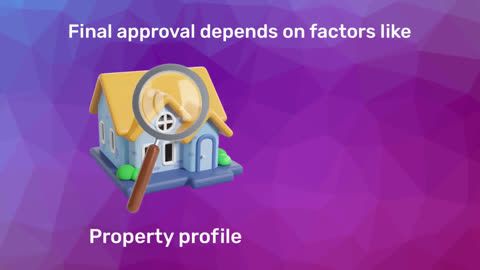Navigating the intricacies of the Indian Income Tax Act can be challenging, especially when dealing with salary arrears, advance payments, or family pension. Fortunately, Section 89 of Income Tax Act provides relief to taxpayers who might face a higher tax burden due to receiving such payments in a lump sum. This section aims to mitigate the extra tax liability that can arise when income pertaining to multiple years is paid in one financial year.
What is Section 89 of Income Tax Act?
Section 89 of Income Tax Act is designed to provide tax relief when a taxpayer receives salary in arrears or advance, family pension, or any other income that spreads over more than one year. This relief ensures that taxpayers are not unduly penalised for receiving large sums in a single financial year, which could push them into higher tax brackets and increase their tax liability disproportionately.
How does Section 89 work?
When you receive a salary payment late (called arrears) or in advance, your total income for the year rises suddenly. This increase may push you into a higher tax bracket, meaning you might have to pay more income tax. Section 89 is a helpful provision that allows you to lower this burden by ensuring fair treatment of such irregular income.
Instead of paying tax as though the entire amount belongs to the year it was received, Section 89 lets you spread out the income across the years it actually relates to. This recalculation helps you avoid paying higher tax unnecessarily.
To benefit from Section 89 relief:
You must include full details of tax calculation when filing your income tax return for the year in which arrears or advance salary was received.
You must file Form 10E online on the Income Tax Department’s e-filing portal before submitting your return.
Step-by-step process:
Calculate total tax for the year you received the arrears or advance.
Recalculate tax as if the arrears were received in the original year(s) they belong to.
Compare both tax amounts. The difference between them is the tax relief under Section 89.
Examples where this is useful:
If arrears cause your income to fall under a higher slab rate, this relief helps redistribute the income appropriately.
If tax rates in earlier years were lower, Section 89 ensures your tax is calculated using those older rates, preventing overpayment.
In essence, Section 89 helps smooth out your tax burden by treating the irregular income in a fair, time-appropriate manner.
Eligibility criteria for claiming relief
You can claim relief under Section 89 of the Income Tax Act if certain conditions are met:
Resident Indian: You must be an Indian resident during the assessment year concerned.
Recognised Retirement Account: If claiming for retirement income, the account must be in a country that India recognises for this purpose.
Residency at Time of Account Creation: You should have been a Non-Resident Indian (NRI) living in the country where the account was opened.
Foreign Taxation: The retirement income should be taxed by the foreign country when withdrawn, not when earned.
These conditions are meant to ensure only legitimate arrears or deferred earnings are granted relief under this section.
Relief under Section 89(1)
Tax is typically calculated on the income you earn or receive in a financial year. However, if your income includes past payments made in the current year, such as arrears, your tax liability might increase. This is because the delayed payment may push your income into a higher tax bracket.
To help reduce this unexpected tax burden, Section 89(1) of the Income Tax Act offers relief. This means you won’t pay extra tax just because a payment was delayed.
Relief under this section can be claimed for the following:
Arrears or advance salary
Premature withdrawal from Provident Fund
Gratuity
Commuted pension value
Arrears of family pension
Compensation due to job loss or early retirement
The relief works by recalculating your tax as though the income had been received in the original year it was due. The tax difference between the year it was received and the years it should have been paid gives you the benefit.
To claim this relief, you must submit Form 10E before filing your income tax return.
How to calculate tax relief under Section 89(1) on salary arrears?
You can calculate your own tax relief under Section 89(1) by following this step-by-step process:
Step 1: Work out the total tax payable in the year you received the arrears, including the arrear amount. You can find this in Part B of your Form 16.
Step 2: Calculate your tax without the arrears for the same year. Use your Form 16 and employer’s arrears document to find the amount.
Step 3: Subtract the Step 2 amount from the Step 1 amount. This gives the extra tax caused by the arrears.
Step 4: Calculate the tax you would have paid in the original year (e.g., 2021–22), excluding the arrears.
Step 5: Now calculate the tax in that original year including the arrears.
Step 6: Subtract the amount in Step 4 from Step 5. This shows the extra tax if arrears had been received in the correct year.
Step 7: If the amount in Step 3 is greater than the amount in Step 6, the difference is your eligible relief under Section 89(1). If not, no relief is available.
You can also use the Income Tax Department’s website to calculate this relief online. Once you’ve calculated it, you can file your return on ClearTax or any other authorised platform.
The example below shows how a person ‘A’ saved tax under Section 89 by spreading out her arrears across financial years.
Particulars |
Tax liability for FY 2022-23 |
Tax liability for FY 2021-22 |
||
Salary inclusive of arrears |
Salary without arrears |
Salary inclusive of arrears |
Salary without arrears |
|
Step 1 |
Step 2 |
Step 3 |
Step 4 |
|
Total income |
18,00,000 |
15,00,000 |
9,00,000 |
6,00,000 |
Income tax |
3,52,500 |
2,62,500 |
92,500 |
32,500 |
Cess |
14,100 |
10,500 |
3,700 |
1,300 |
Total tax liability |
3,66,600 |
2,73,000 |
96,200 |
33,800 |
Step- 3 (X) Tax at Step (1) – Tax at Step (2) |
93,600 |
- |
||
Step- 6 (Y) Tax at Step (4) – Tax at Step (5) |
- |
62,400 |
||
Relief u/s 89: Step 3 – Step 6 |
31,200 |
|||
Tax payable: Tax at (1) – Relief |
3,35,400 |
|||
Relief under section 89 = (X) - (Y) = 93600 - 62400= 31200.
Similarly, tax liability for FY 2023-24:
1 |
Total income (excluding arrear) |
15,00,000 |
2 |
Salary received as arrear (arrear received for FY 22-23) |
3,00,000 |
3 |
Total income including arrear |
18,00,000 |
4 |
Tax on total income as per item 3 |
3,66,600 |
5 |
Tax on total income as per item 1 |
2,73,000 |
6 |
Tax on salary received in arrears (difference of 4 and 5) |
93,600 |
7 |
relief u/s 89 - step 8- step 6 |
31,200 |
|
Tax payable after relief |
3,35,400 |
|
Tax liability for FY 22-23 without arrear |
Tax liability for FY 22-23 with arrear |
Total income |
6,00,000 |
9,00,000 |
Total income |
33,800 |
96,200 |
Difference |
62,400 |
|
Year of arrears vs. Year of receipt:
Section 89 relief is available when salary or pension arrears are paid in a year different from the one they were due. This situation can lead to higher tax liability for the year of receipt. Section 89 lets taxpayers recalculate the tax as if the income was received in the original year, making the tax burden fairer. This is particularly helpful when the earlier year had lower tax rates or when the arrears push the person into a higher tax slab in the current year.






